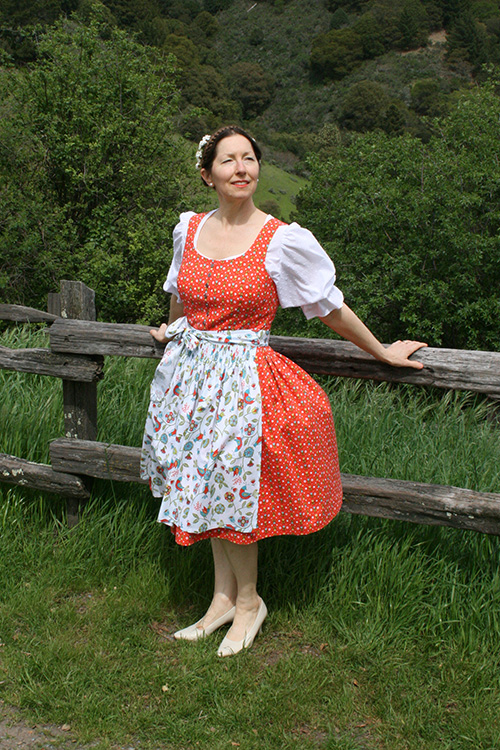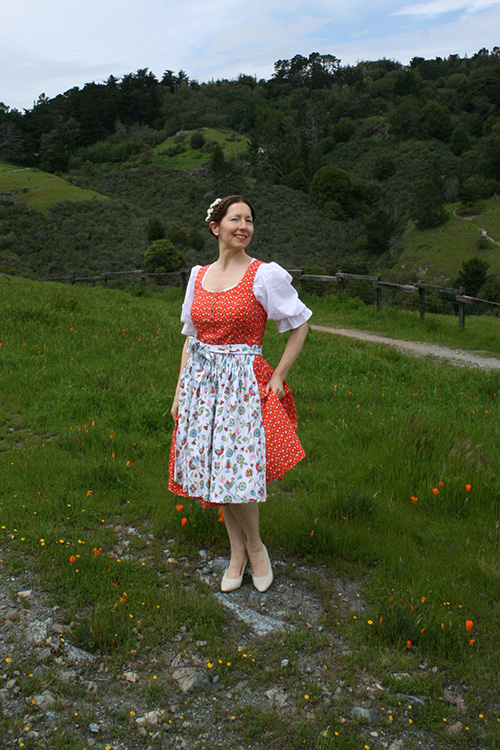
September 2018 – March 2019
A dirndl in quilting cotton with dotted Swiss blouse, using Burda #8448 and Folkwear #123.
Dirndl bodices with princess seams and contrast piping are fun. So I picked up Burda’s pattern #8448. For this busy print I skipped the piping. It’s hard to say whether darts or princess seams are easier to fit. A dart was added to the side front to take in some of the excess. Not the first time I’ve felt it necessary to make this adjustment (see late 1830s princess seam dress). A cable tie at the side front seams is the only structure. More experimentation is clearly in order.
This delightful red quilting cotton has rows of yellow and blue tulips. I ordered a few yards for the dress. Also a yard of white printed fabric from the same collection. Easy pattern mixing. Surprisingly, one yard was not enough for the apron. The straps were pieced to make it work. An effort was made to cut the dress with the pattern aligned vertically and horizontally, which is extra work with princess seams. (An irregular design would have been simpler.) Silver metal buttons were purchased locally.

A good deal of time was spent mulling over two options: bagging the lining vs underlining. With a bag lining I don’t need to worry about the exposed seams. If piping is added to underlined seams, they can get bulky. On the other hand, underlining is very accurate and makes adjustments easier. Since I keep my side seams exposed, however, my bodice can be altered. Hard choices. In the end the bodice was bag-lined in yellow broadcloth. Sometimes pretty insides win. You might notice that the lining seam allowances are topstiched. It’s a technique I’ve adopted from Roberta Carr’s Couture book. She uses it to stabilize thin lining fabrics, but in this case I’ve used it to flatten and strengthen the seams of the structured bodice.



Apron and skirt were gathered by hand in the traditional manner. JoAnn’s homespun check fabric was used for the Hansl. These wide strips are sewn to the back of apron and skirt, and act as a guide for many rows of cartridge pleating. I’ve never handled “real” hansl fabric, but this is extremely lightweight so seemed like a safe choice. It certainly didn’t add any bulk to the pleats. The skirt was whipped to a finished bodice. The apron was sewn to it’s band by machine. I had to do a lot of pressing and basting of pleats to make it machinable, but the results were worth it. The rest of the apron is done entirely by hand.
Some minor things to note: the apron straps were sewn to end in a “V” point, and the bodice’s back neckline was lowered, per the Folkwear Dirndl #123 bodice. The poofy dotted Swiss blouse was made using Folkwear’s pattern. The Burda skirt, a large rectangle, was easily shortened to knee length. And despite a closet full of petticoats, nothing worked with the dress. Naturally. So I picked up a new Malco Modes petti, the Zooey 580.
These photos were taken in April, after a very rainy winter. The Oakland hills were at their greenest.



